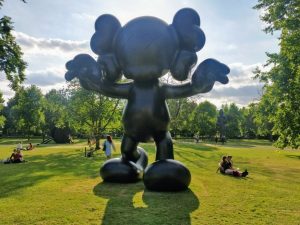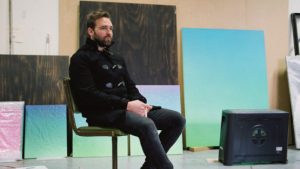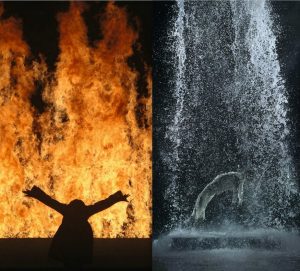10th December 2014 – 31st January 2015 Blain | Southern 4 Hanover Square London, W1S 1BP
Curated by Peter J. Amdam
REFRACTION. THE IMAGE OF SENSE is a group show curated by Peter J. Amdam. This exhibition brings together artists who in very different ways accentuate how art operates in an era of new media, in a world which is organically and indiscernibly both human and non-human at the same time.
Says Peter Amdam:
“The web stores, directs and administers our memories, dreams, affections, desires, longings, beliefs, afflictions, fears, perversions, morals, finances, political convictions and even bodily movement. It is a fluid container of the same arcane matter that art has attempted to both organise and dis-organise for centuries. One can now speculate about the post-human, a composite agency that still feels, senses and imagines the world around us, suggesting a deeply charged modulation on the way the aesthetic experience of art is conceptualised, sensed and imagined.
The ways and workings of a ‘networked society’ undoubtedly alter how memory, expression, colour, materiality and so forth, are brokered, mediated and refracted through art. This no longer depends on cognition in a traditional sense, but runs and pulsates through a pre-cognitive and arcane network. REFRACTION. THE IMAGE OF SENSE attempts to grapple with the notion and idea of this post-human perception and imagination.”
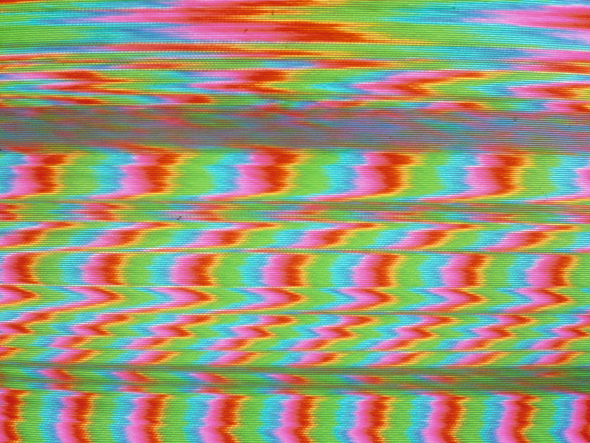
Bill Viola Information 1973 Videotape, color, mono sound; 29:35 minutes Photo: Kira Perov
Uncannily anticipating many of the ideas addressed in this exhibition, Bill Viola’s (b. 1951) Information, 1973, explores the unknown edges of the then nascent video technology to the fullest and lets said technology live a life of its own. Its materials are serious actants in the work’s realisation, making it affected and affecting. Not only does Viola’s Information instantiate something of the post-human agency, it also precedes the way contemporary society absorbs and metabolises a technologically propelled flow of production, suggesting the archiving of image, sense and memory.
The new set of paintings by Ida Ekblad (b. 1980) trace mesmerising colours, washes, airbrush techniques, puffy inks, graffiti and alien-like life forms. In these works digital memories meet a confident and explorative sensibility for painting itself.
Elias Hansen’s (b. 1979) work involves impressive artisan and rhizomatic glass assemblages. Hansen is a trained glass blower — a fact which accounts for the seductive, hands-on appeal of his installations. These are charged with an open-ended fascination and love for both the outcast and the outlaw—multi-dimensional worlds brimming with light, colour and intensity.
Lars Holdhus (b. 1986) is also a skilled musician and a self professed ‘tech-head’. Accordingly his works reflect a strong sense of rhythm, seriality and melody, as well as a deep immersion in technology. He works with captivating images of both nature and science, adding multiple layers of surfaces and interfaces of his ‘personal’ signature.
Yngve Holen’s (b. 1982) work suggests an obsession with contemporary life, travel and leisure, as well as cleanliness, surgery and control. His works—as this water cooler—often appear as dissected readymades from the future, ‘pimped out’ (Yngve Holen) to morph into Pop Art entities from the realm of industrial technology.
Michael Manning (b. 1985) is already a visionary pioneer of contemporary digital and net art. Manning’s paintings and videos stem from the internet and software, utilising the crypto-materiality of computer technology in conjunction with the underground surf and skateboard culture of his native Southern California.
Magali Reus’ (b. 1981) contribution consists of two fridge-like sculptures that possess a warm fragility and lucidity. Combining a surprising palette of materials, they interlace seemingly liquid skins between evocations of the functionality and sensibility of the human body and the archiving processes of a fluid, collective memory.
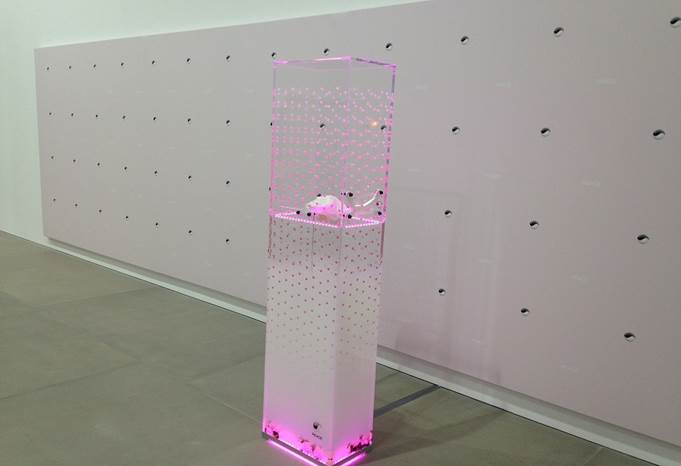
Timur Si-Qin Premier Machinic Funerary X: PEACE Step and Repeat 2014 UV print on pink canvas
200 x 600 cm / (78¾ x 236¼ in)
Timur Si-Qin (b. 1984) claims his work ‘does not believe in a separation between biology and culture’. His art consists of hyper-commercial materials—relics, stock photography, fashion, technology—which enter their own dynamic biological life and form.
In the paintings of Michael Staniak, (b. 1982) a heightened sensitivity of matter in transformation and movement emerges. His paintings weave between the interfaces of painting and the digital, engaging with a striking beauty that signals an intimate yet rigorous relation to the deep materiality at hand.”
